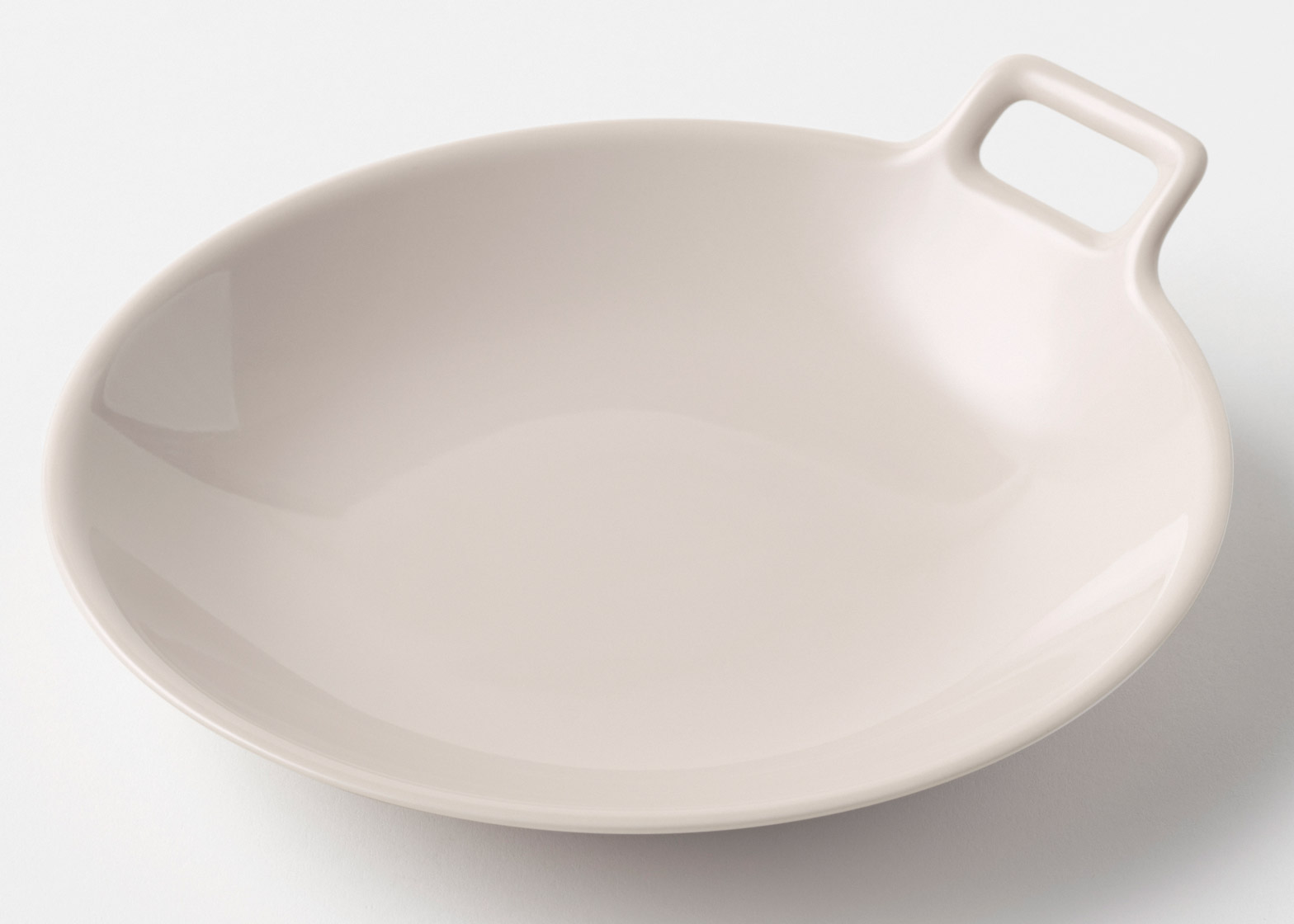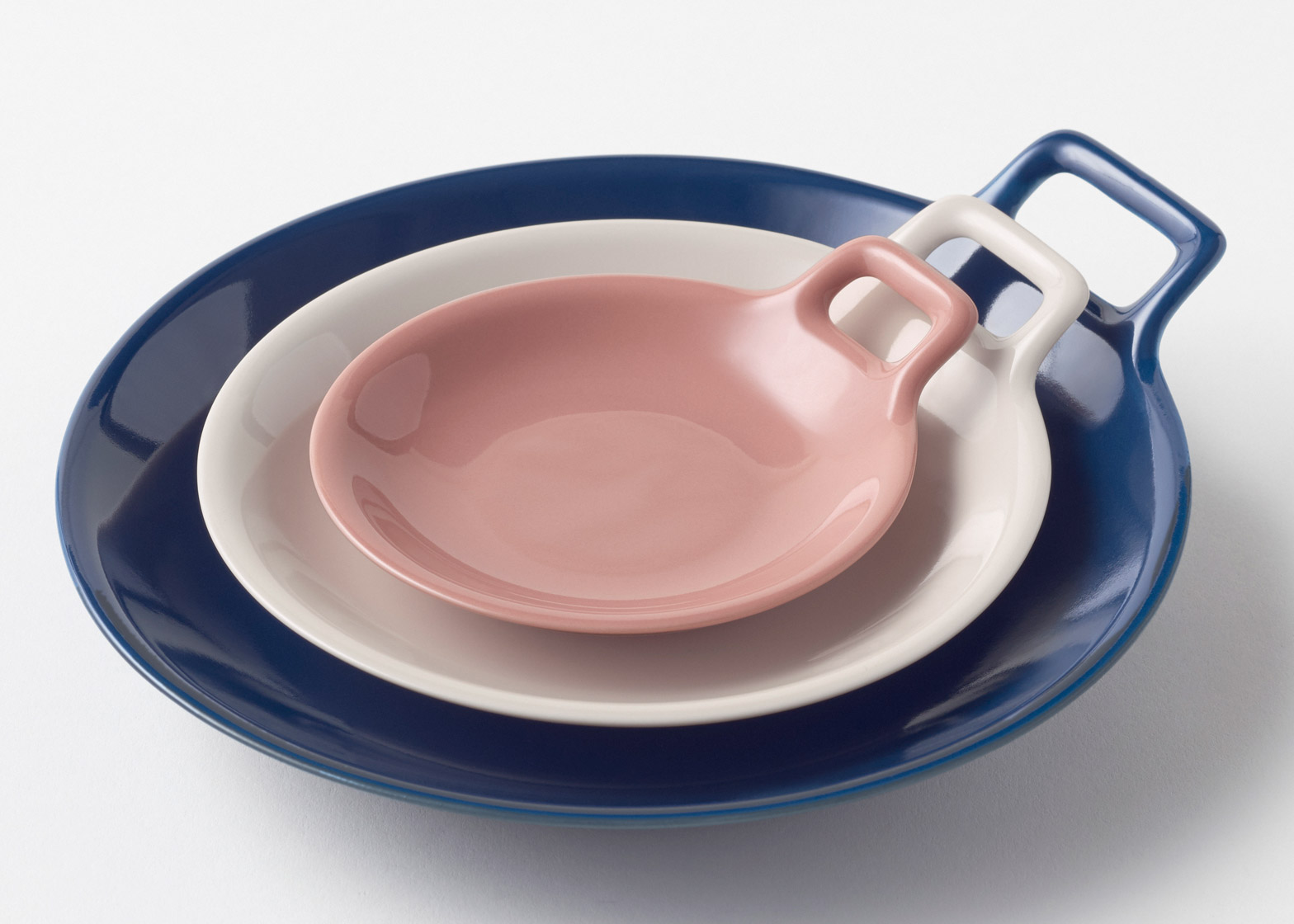Japanese studio Nendo has designed a collection of ceramic tableware with handles to help store them in compact spaces and carry hot food.
The Totte range of circular plates and bowls is available in three different sizes, and in white, brown, pink, green and blue versions.
Each piece features a rectangular handle with rounded corners that extends from the rim, that is designed to be easier to hold when the plates and bowls are hot.
"Not only has this resulted in new ways of using them but provided them with a strong 'sense of security as a tool'," said Nendo, which recently designed pairs of cone-shaped house slippers that resemble wizard's hats.
The hole in the middle of the handles also allows the range to be hung from a wall for storage. The three sizes fit neatly inside one another, so they can be stored on a shared hook or stacked horizontally.
As living spaces become more restricted, designers are focusing on creating products for compact apartments.
David Roman Lieshout created a semi-foldable bicycle that can be hung on the wall, and Stockholm-based Note Design Studio reduced the dimensions of a typical lounge chair to fit into smaller homes and offices.
Last year, furniture giant Ikea launched a limited-edition range specifically targeted at young, creative city-dwellers faced with small living spaces and uncertain rental terms. British retailer Heal's followed suit with a collection that launched at the 2014 London Design Festival.
Nendo has released a steady stream of products this year, including expandable shelves using carbon fibre, an aluminium chair with interchangeable wooden tops, and a bag designed specifically for architects that could change shape to accommodated differently sized drawings.
"When I start thinking about working on close to 400 projects, it relaxes me," Nendo founder Oki Sato told Dezeen in an interview.
Other tableware designed by the studio includes bowls that are so thin they quiver in the breeze, and a glassware collection made from recycled Coca-Cola bottles that had deteriorated through repeated washing and filling.
Photography is by Akihiro Yoshida.















